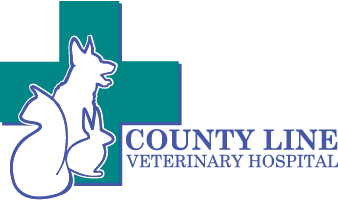Pet Health Articles
-
Diabetes is an inability of the body to regulate blood sugar caused by an abnormality of the pancreas. It is the second-most common endocrine disease in cats. It causes increased thirst, urination, appetite, and weight loss. Cats most commonly have type 2 diabetes, caused by decreased insulin production or insulin resistance, and it is often associated with obesity. Diabetes is diagnosed by measuring increased levels of glucose in the urine and blood. Diabetes treatment includes insulin injections and dietary changes. Changes in blood sugar must be monitored regularly.
-
Diabetes is an inability of the body to regulate blood sugar caused by an abnormality of the pancreas. It causes increased thirst, urination, appetite, and weight loss. Most dogs have type 1 diabetes, caused by total or near destruction of the insulin-producing cells, and insulin injections are required for treatment. Diabetes is diagnosed by measuring increased levels of glucose in the urine and blood. Diabetes treatment includes insulin injections and dietary manipulation with regular blood sugar monitoring. Financial costs can be high during the regulation period, or if a complication arises, and twice-daily insulin injections are a lifelong commitment.
-
Diabetes mellitus results from an inadequate production of insulin from the pancreas. The primary treatment is replacement by insulin injections. The body's response to the injections needs to be regularly monitored using an at-home glucometer or continuous glucose monitoring system. Insulin must be stored and reconstituted carefully to ensure dosing is accurate. Giving subcutaneous injections of insulin can seem daunting at first, but by following the directions in this handout, it will quickly become second nature to both you and your pet.
-
Diabetes mellitus results from an inadequate production of insulin from the pancreas. The primary treatment is replacement by insulin injections. The body's response to the injections needs to be regularly monitored using an at-home glucometer or continuous glucose monitoring system. Insulin must be stored and reconstituted carefully to ensure dosing is accurate. Giving subcutaneous injections of insulin can seem daunting at first, but by following the directions in this handout, it will quickly become second nature to both you and your pet.
-
New medications can help regulate blood glucose levels in cats, including once-daily oral medications bexagliflozin (Bexacat) and velagliflozin (Senvelgo). Cats in the initial stages of DM may benefit most from oral diabetes treatments. This article discusses how these medications work, potential risks, and monitoring required.
-
Diabetes mellitus is an inability to regulate blood glucose caused by a loss of insulin production (Type I) or inadequate insulin supply or resistance (Type II). In cats, diabetes mellitus is most often type II. This type of diabetes usually results from obesity, creating insulin resistance. Cats with type II may be treated with oral medication, but some cats may ultimately require insulin injections. Diet is also important. This article discusses various treatments and monitoring regimens.
-
Dogs usually have insulin-dependent diabetes (also called Type 1 diabetes), and require insulin injections to stabilize their blood sugar levels. This handout outlines the basics of treatment and monitoring, and also discusses the importance of diet.
-
Periodontal disease is the most common problem affecting dogs of all age groups. The importance of daily, at-home dental care cannot be overemphasized. Dogs may benefit from either a food, treat, water additive, gel or powder that has been approved by the VOHC to reduce plaque buildup.
-
Eosinophilic granuloma complex is a term used to describe three forms of skin lesions in cats: eosinophilic plaque, eosinophilic granuloma, and indolent ulcers. The lesions most commonly occur on the lip, but can also develop in the mouth or on other areas of the body.
-
Demodicosis is a parasitic skin condition caused by Demodex mites. These microscopic mites can be found on the skin of all animals but, in some cases, they multiply to excessive levels and cause clinical signs. This handout discusses causes, signs, diagnosis, and treatment of demodicosis.

